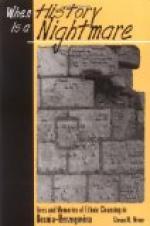|
This section contains 604 words (approx. 3 pages at 300 words per page) |

|
Ethnic Conflict in Bosnia and Kosovo in the 1990s
Summary: The history of ethnic-inspired violence in Bosnia-Herzegovina and Kosovo. These conflicts involved peoples with conflicting political and religious view living together.
The 1990s were a period of extreme ethnic conflict in the former nation of Yugoslavia. In 1992, Bosnia-Herzegovina passed a referendum for independence, which was not met with an equal enthusiasm amongst the republic's population. The group most against this independence was the Serbian minority, who were convinced by leaders such as Slobodan Milosovic and psychiatrist Jovan Raskovic in the idea of a "greater Serbia." Serbs were told they needed to dominate the surrounding Croats and Muslims based on their psychological superiority. Serb fighters carried out vicious campaigns of ethnic cleansing, killing over 100,000 people with another 1.5 million being forced from their homes to created predominantly Serbian areas. In 1995 Bosnia Croatia and Serbia signed the Dayton peace accords and focus shifted towards Kosovo, where discord had been emerging between the Albanians and the Serbs.
In 1992 (and with resolutions created earlier) Kosovo's Albanian majority also voted to secede from Serbia and...
|
This section contains 604 words (approx. 3 pages at 300 words per page) |

|


